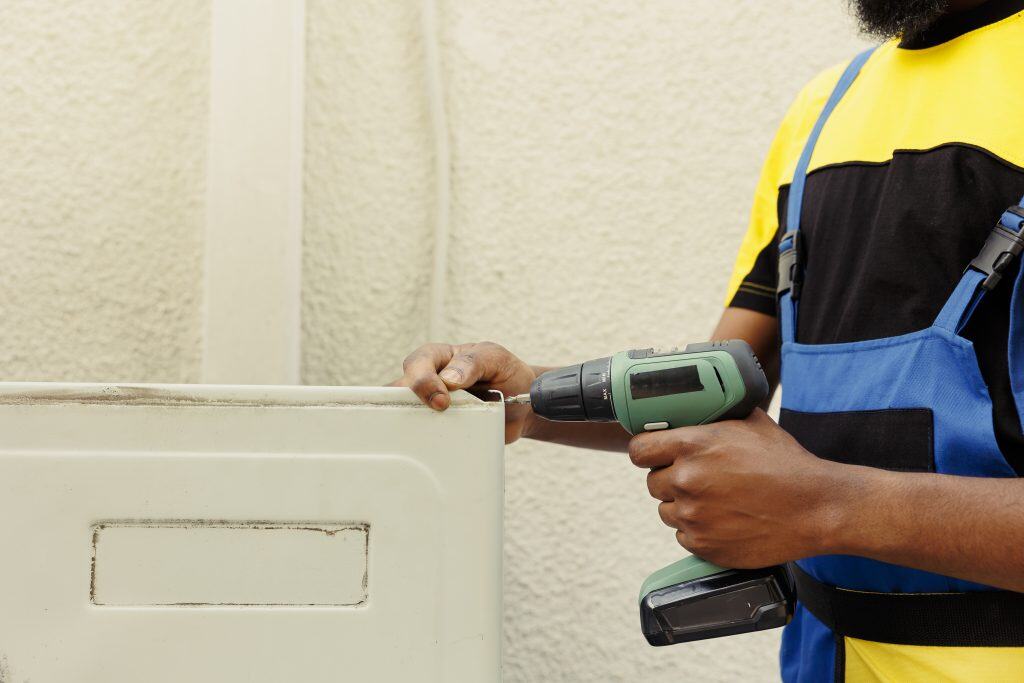Top AC Repair Mistakes: 7 DIY Blunders to Avoid
Share
Table of Contents
Air conditioners are essential for staying comfortable during hot months, but when something goes wrong, many homeowners are tempted to handle repairs themselves. While some maintenance tasks are safe for DIY, others can lead to costly damage, safety risks, and reduced efficiency if done incorrectly.
Knowing the most common AC repair mistakes can help you avoid turning a minor issue into a major problem.
Why DIY AC Repairs Can Be Risky
Working on an air conditioner without the right training or tools can cause more harm than good. HVAC systems have electrical components, refrigerants, and complex parts that require precise handling. Incorrect repairs can void warranties, create safety hazards, and shorten the lifespan of your unit.
Common DIY AC Repair Mistakes to Avoid

Ignoring the Root Cause of the Problem
One of the biggest mistakes is treating only the symptoms rather than addressing the actual cause. For example, adding refrigerant without checking for leaks only delays the inevitable. A clogged filter or dirty coil might seem minor, but ignoring it can strain the entire system.
Overfilling or Underfilling Refrigerant
Refrigerant levels must be precise for optimal performance. Adding too much or too little can cause poor cooling, higher energy bills, or even compressor failure. Measuring refrigerant requires specialized gauges and training.
Call a certified technician to check and recharge refrigerant properly. Handling refrigerants without certification is also illegal in many areas.
Mishandling Electrical Components
AC units involve high-voltage electricity. Attempting repairs on capacitors, wiring, or control boards without proper safety precautions can result in serious injury. Even a small wiring mistake can lead to shorts, fires, or total system failure.
Using the Wrong Replacement Parts
Some homeowners use cheaper, generic parts to save money, but mismatched components can affect performance and cause long-term damage. For example, using the wrong capacitor can reduce efficiency or burn out the motor.
Always use manufacturer-approved parts to maintain warranty coverage and ensure compatibility.
Neglecting Regular Maintenance
Skipping routine cleaning and tune-ups is one of the most common blunders. Dirt buildup on coils, clogged filters, and blocked drain lines force the system to work harder, leading to breakdowns and higher repair costs.
Some preventive measures you should take include:
- Replace filters every 1–3 months
- Keep outdoor units clear of debris
- Schedule annual professional inspections
Forgetting to Turn Off Power Before Repairs
Even small repairs should never be attempted without cutting off the power supply. Many DIY accidents occur because homeowners forget this crucial step, resulting in electrical shocks or component damage.
Sealing Air Leaks Incorrectly
When sealing ductwork, using the wrong materials like regular duct tape instead of mastic sealant or foil tape can lead to leaks and reduced efficiency over time.
When to Call a Professional

If your repair involves refrigerants, electrical work, or internal mechanical components, it’s safer and often more cost-effective to hire an HVAC technician. Professionals have the training, tools, and certifications to repair the unit without risking safety or performance.
